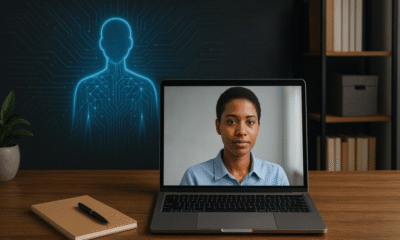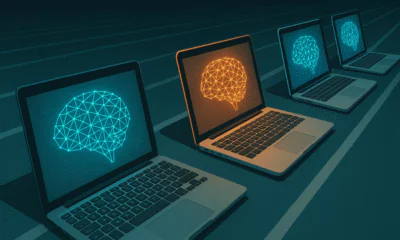Thought Leaders
How AI is Reshaping Music Education

AI is receiving more acknowledgment as it becomes an increasingly familiar factor of modern technology in our daily lives. The general public is being exposed to a new way of identifying relevant content, acquiring information, and even learning skills. This potentially affects how beginner musicians approach learning an instrument and will directly impact how music education is moving forwards in the upcoming years.
From searching songs by chords to generating the chords of any song, viewing chord diagrams in real-time, or separating the sound sources within songs, these are just some of the AI-enabled features that are extending the possibilities of music education. There is no longer a standardized approach to music lessons, and the rise of technology gives more options and possibilities to personalize music learning paths.
Is instrument learning becoming more accessible?
While the cognitive benefits of playing a musical instrument are widely acknowledged, the fact that not everyone can take part in this activity is often overlooked. In fact, The Arts Education Data Project (AEDP) highlighted how millions of U.S. students do not have access to music education despite the progress and efforts made to keep music lessons in public schools.
Firstly, learning an instrument may be inaccessible to some from a financial standpoint. Besides financial reasons, people may be reluctant to learn an instrument due to time constraints or the initial inability to play the music they would like, as they may find the prospect overwhelming or too difficult at first.
Moreover, every student learns at a different pace so group musical classes, or the expectations of individual lessons, may not be for everyone. After all, the fact that around 50% of students quit music lessons and music-related activities by the time they are 17 suggests that knowing and learning an instrument is not enough. Students also need to enjoy playing an instrument for this activity to be sustainable – with this mindset, it helps form a habit and motivates them to improve their musical abilities, whilst importantly providing a creative outlet.
Learning platforms that incorporate AI learning could alleviate many of these factors that affect instrument learning on a wider basis, and help optimize the learning environment in conjunction with traditional teaching models. They can provide a more accessible platform for practice, allowing the student to take the approach they are comfortable with and find their own pace, instead of relying on a predefined music learning program. Determining one's personal learning pace can be a crucial factor for students returning to their instrument, so they don’t feel pressured about their progress. Finally, global internet availability gives further options to learn in regions across the world where it might not even be possible to have music lessons in person.
Some AI-enabled music learning platforms, such as Chordify, are able to extract the chords from any audio source and present them on-screen in a matter of seconds. The core of this platform is a machine-learning algorithm based on deep neural networks. These networks learn to have a certain input-output behavior- they are trained on a vast amount of song spectrograms, along with the respective chord annotations. This process is repeated for song beats, and after enough training examples, the networks learn how to recognize a chord and detect a beat, even in audio pieces they have never seen before. With these two elements working together, the algorithm can display the chords at the right time within any song.
Thus, a unique element of this platform is that students can search for any song’s chords and see the results, so no matter their taste in music and how niche it may be, they can find a way to get engaged and learn. The company has also developed an AI-enabled guitar teaching app, aimed at guiding absolute beginners while learning their first chords. It recognizes what you play, then gives feedback to aid your performance. This is indicative of the additional learning avenues AI can open and the presence it could have in the future of music teaching.
If novices are comfortable or familiar with only some specific chords, they can also search for songs based on those chords. Finding songs with chords they already know will encourage beginners to keep on playing, which can be very beneficial in the initial steps of learning an instrument, notoriously the hardest time to keep momentum. This can be an effective foundation for creating a habit of picking the instrument up to play on a regular basis and progressing with their musical development.
Conclusion
While AI has certainly made instrument learning more accessible and interactive, this does not mean the end for traditional music classes and group jam sessions; it means the offer of additional resources and the potential democratization of instrument learning and playing. Autodidacts can enjoy the process of learning a musical instrument as well, while people who would like to practice beyond music classes and rehearsals have additional support from this resource. Machine learning techniques could also be utilized in the areas of music theory and analysis – they are designed to recognize patterns, meaning they are ideal for analyzing compositions.
Amidst the vast information available online, AI-enabled platforms can help tailor individual learning needs and provide more flexibility. If utilized correctly, they can enhance creative processes – beginner musicians can start by learning existing songs, and this can eventually expand their musical vocabulary as their skills develop.
More methods of learning a musical instrument can only benefit society, and it will certainly be interesting to see how the relationship between AI and music education develops as technology continues to evolve.












